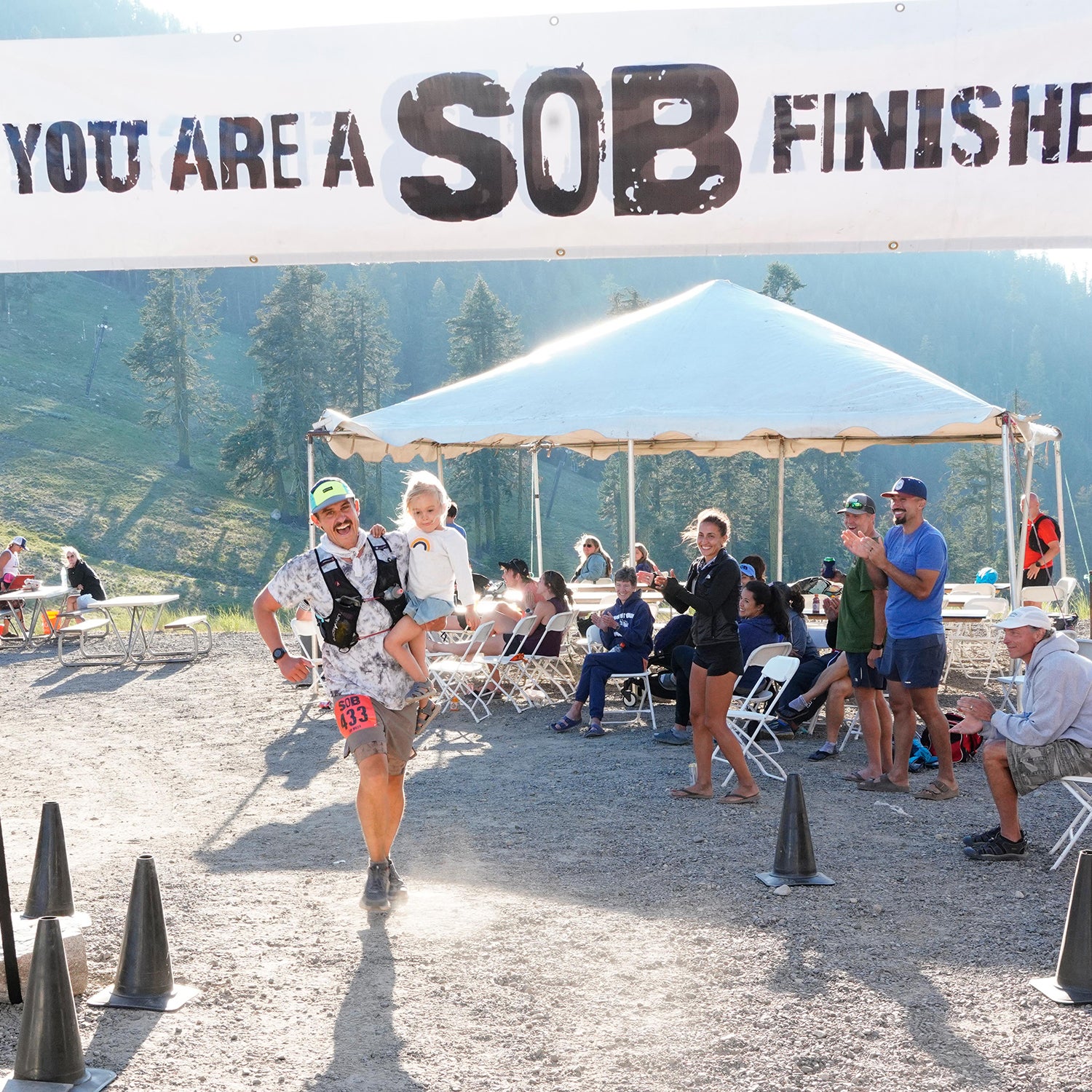One of the reasons I love ultra-distance objectives is the preparation it takes to get everything right. Accounting for all of the things that could go sideways on race day—from blisters, to chafing, to an upset stomach—and finding ways to avoid those mistakes adds a layer of challenge to running that I find addicting.
I ran a 50-mile race in the following kit last month and despite 90- to 100-degree heat, I had the best race of my life (I’ve had plenty of bad ones). It was by no means fast or heroic, but it was surprisingly comfortable and fun, in no small part due to having a totally dialed gear and food system. Every choice was the result of at least dozens—and in some cases hundreds—of miles of testing and tinkering. For once, everything delivered on race day.
Ultraspire Momentum 2.0 Race Vest ($90)
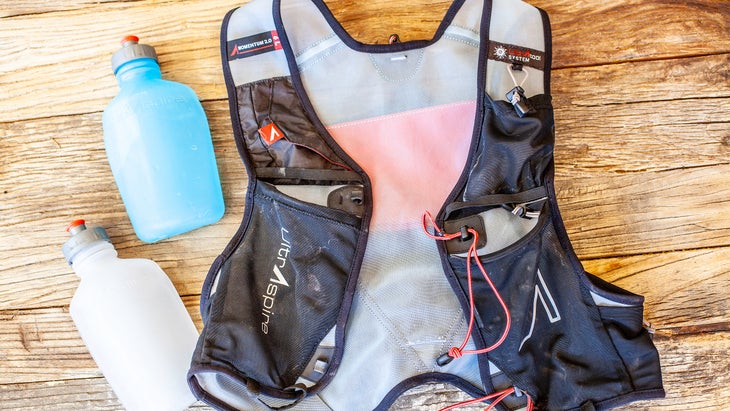
This is the most breathable and ergonomic race I have ever tested. The lightweight mesh build disappeared on my chest and the positioning of the two 550-milliliter water bottles on the backs of my hips made refilling and consuming water easy. The Momentum 2.0 also swallowed gear. It held 14 gels (I used two drop spots at aid stations to refill), half a pound of gummy bears, half a box of Fig Newmans, TP and a plastic transport bag, my iPhone, and an extra water bottle.
Reigning Champ X Ryan Willms Shirt ($125) and Lined Running Short ($145)
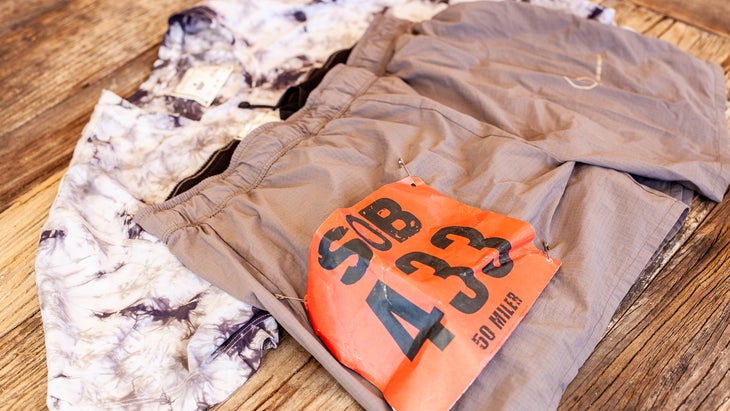
You don’t need to spend hundreds of dollars on running clothing to start or thrive in the sport. Many runners who crushed my finish time wore less expensive kits. I ran in, and heavily endorse, these two items because they are the most comfortable running pair I have ever used. The supremely stretchy Italian nylon was remarkably supple and did not chafe me over dozens of miles of testing and racing. The were equally comfortable and their liner kept my thighs from chafing. Both breathed exceptionally well in the intense heat.
Runderwear Men’s Running Briefs ($25)
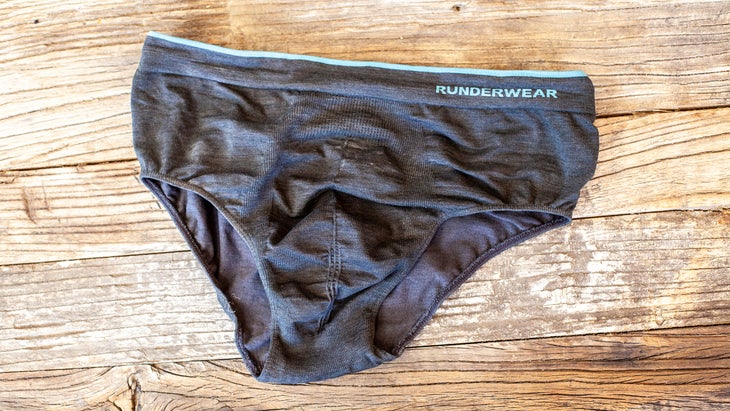
I appreciated the extra layer of support that these delivered. The high level of support does not come at the expense of any comfort or breathability despite it being a second liner in a high-friction area. After over 500 miles in this specific pair, I have nothing but positive things to say about these.
Spring Energy Gels (from $8 for two)
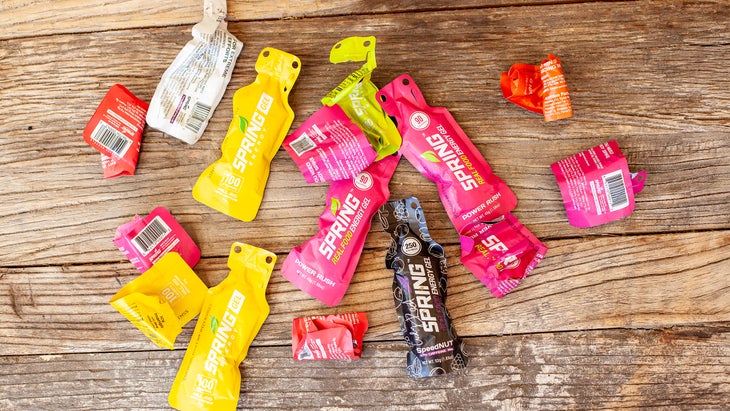
I have a finicky stomach and a horrible track record with gastric distress at ultra races, but I consumed 23 during this race and did not get sick—or sick of them. I ate something every 30 minutes throughout my run, and while I threw in a pack of gummy bears and some Fig Newman’s, the majority of my fuel consisted of these. I enjoyed eating them so much that I consumed one while I was in sight of the finish line. The real foods (like fruit, salt, and rice) that Spring Energy uses in each pack agreed with my stomach unlike anything else I have tried in nearly a decade of endurance racing.
Black Forest Gummy Bears ($4)
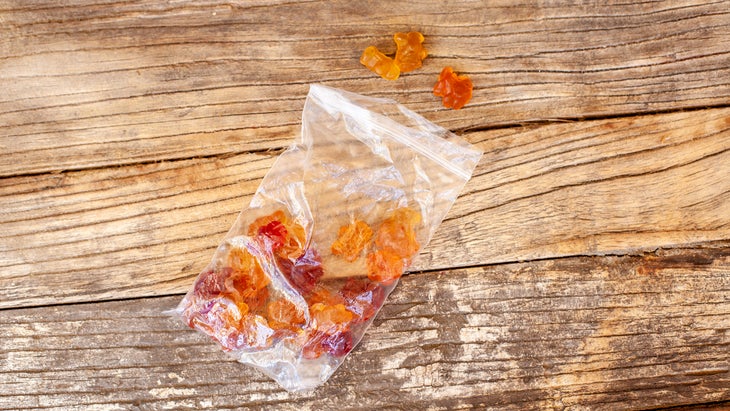
giant bag of gummy bears was on sale at my local Rite Aid and I ate them in training and on race day to diversify my calories. They are delicious and make me happy every time I eat them. I kept them in a special “happy pocket” and used them like dog treats to incentivize myself to keep moving.
Fig Newman’s Strawberry ($4)
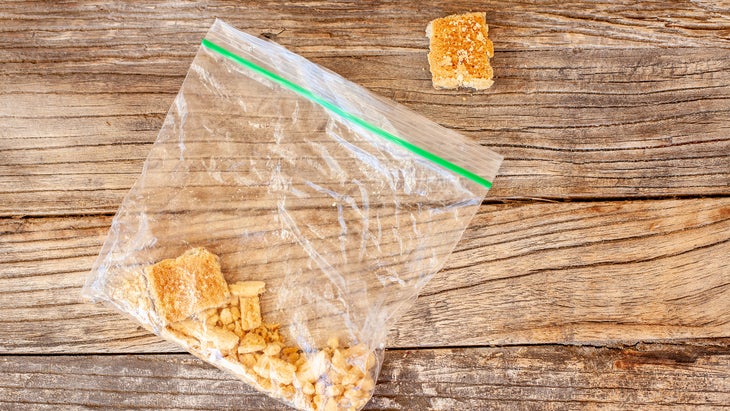
I wanted something that was neither gummy or gooey to chew on. aren’t cloyingly sweet, are easy to digest, and are easy to transport.
Ultimate Direction Clutch Handheld Bottle ($40)
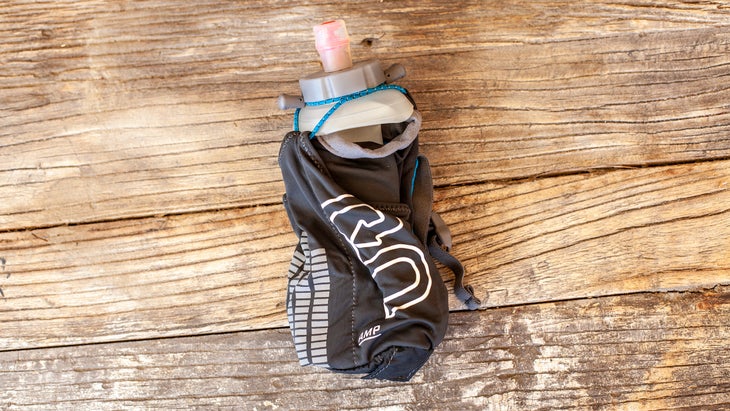
I left an Ultimate Direction EDC bottle in a drop bag at an aid station at 31.6 miles to make sure I wasn’t rationing water when it was close to 100 degrees. I refilled my other two bottles and carried this while I soldiered on. This model is discontinued, but I recently tested the very similar UD Clutch and loved it.
Hoka Clifton 8 Running Shoes ($130)
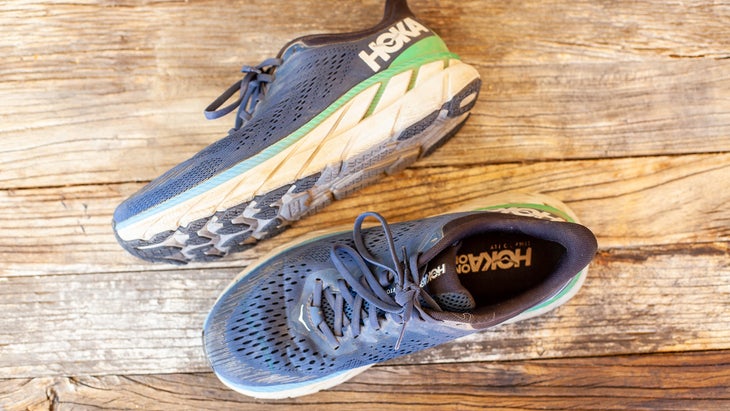
The is a road shoe, but I can get away with a light, cushy pair in a serious race in southern Oregon because our trails are remarkably well built and maintained. I used them for training and race day, and I felt completely confident in the support they gave me. They remained fantastically comfortable throughout, and I never so much as rolled an ankle in hundreds of miles in them.
Swiftwick Yosemite National Park Socks ($20)
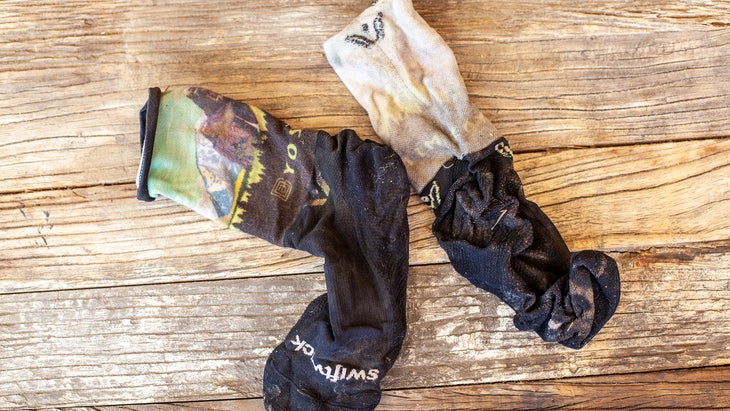
I’ve tested over 100 pairs of athletic socks during my time working as ���ϳԹ���’s Gear Guy. I have extremely strong opinions about fit, moisture wicking, blister mitigation, and durability. The best socks for blister prevention over long distances are . I chose to race in this specific pair because the six-inch cuff helped keep rocks out of my socks and the Yosemite print added a little flair to my kit.
Body Glide Balm ($10)
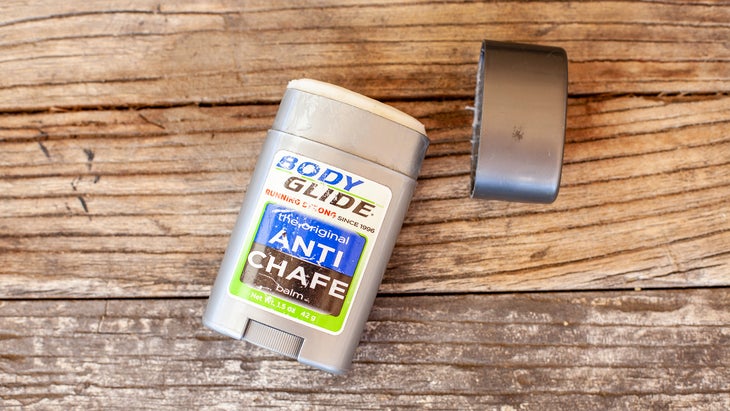
I used the same stick of for this race that I have been using since 2013. I bought it nearly a decade ago, wrote about its insane staying power over two years ago, and then used the same stick to apply massive amounts of lubricant to my nipples and undercarriage for this race. One application was all I needed to feel zero chafe for over 13 hours of running.
Coal Provo UPF 5-Panel Hat ($32)
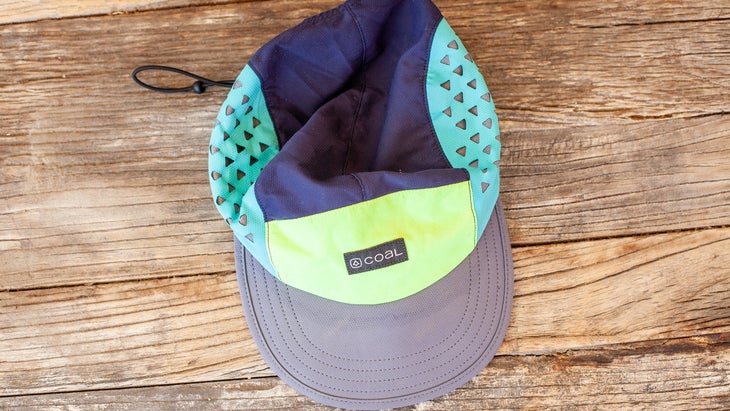
The polyester shell of stylish UPF 50-plus hat is lightweight and breathable. That, coupled with a stretchy elastic and toggle-tightening system make this my most comfortable running hat.
Garmin Forerunner 745 Watch ($500)
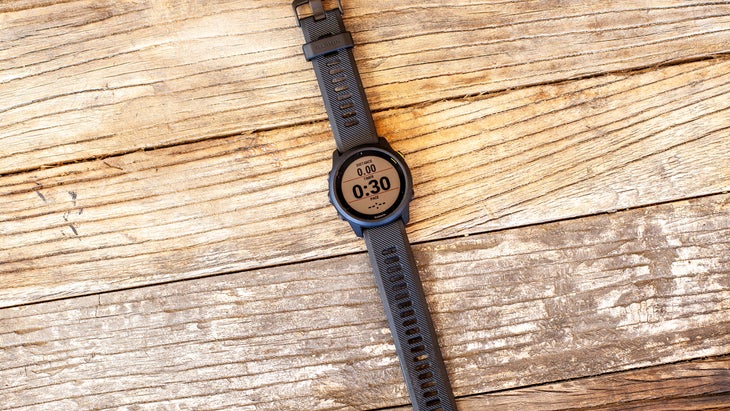
I am currently testing the and I love it, but I’ve worn the for hundreds of miles and trust it. The latter is small, comfortable on my wrist, and extremely easy to use. I set it to a low-power mode and was able to track my mileage, pace, and heart rate throughout the entire race. It also helped me stay on my schedule of eating every 30 minutes.
Bandana
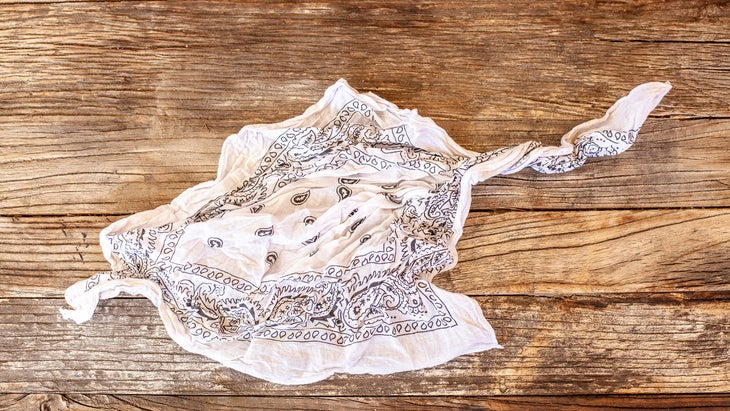
A buddy gave me this generic cotton bandana and it was my secret weapon for remaining cool in the triple-digit heat. Volunteers filled it with ice at three different aid stations and I wrapped it around my neck so that the ice dribbled down my back while I ran.
Toilet Paper in a Ziploc
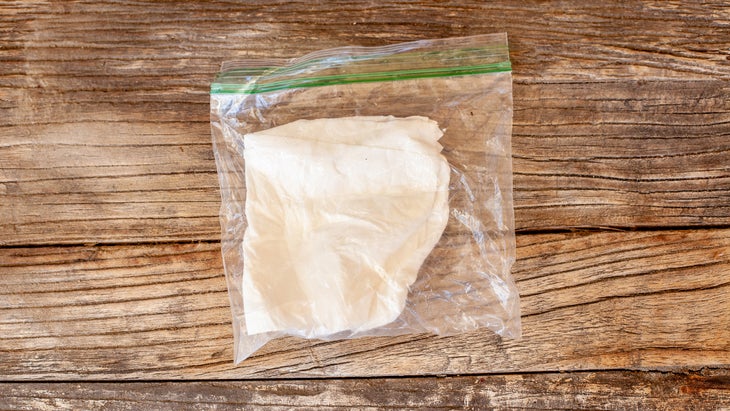
This is the one piece of gear that I brought with me that I did not have to use. Taking a field poop, following LNT practices, and packing out the TP to an aid station trash can is non-negotiable.


